Editor of this issue: Jonas Zdanys
Copyright © 1986 LITUANUS Foundation, Inc.

|
LITUANUS
LITHUANIAN QUARTERLY JOURNAL OF ARTS AND SCIENCES
Volume 32, No. 3 - Fall 1986
Editor of this issue: Jonas Zdanys ISSN 0024-5089
Copyright © 1986 LITUANUS Foundation, Inc. |

|
NATURE — FORMS AND FORCES
SILVIA KUČËNAS-FOTI
In his latest book of photographs, "Nature — Forms and Forces,' Algimantas Kezys is more concerned with close-up details than documentary-like panoramic shots.
An exclusively black and white photographer, Kezys searches for composition, beautiful forms. This book reveals Kezys' passion for composition. He is fond of using the words "game" and "play" when describing his art and says, his "game" is to play with light and shadow, composing bright lines with dark lines.
To him, the documentarist is perhaps the most respected among photographers. "But my weakness is to bypass the life situation," says Kezys. "I don't photograph wars or riots or events that make news. Instead I go to parks and look for sunlit lines that I find in nature."
Never having taken a course in photography, Kezys has been a prolific photographer, one who has been drawn toward nature's forces, intent upon capturing the single most revealing moment in a world filled with motion.
He has been shooting since 1965 and his latest collection of close-up scenes from the United States parks includes pictures that he has shot in the late 1960s.
While his inspiration does not lie in the documentary, this book naturally divides itself into six essays about the park system. A shot of Niagara Falls from his section "Water and Waterfalls" depicts a rush of water thundering down a jagged rock. The stony protrusion is worn by years of the fast-paced water gliding along its edges. Urgency dominates as the water's movement must inevitably continue.
From his "Patterns of the Earth" collection, Kezys chose the mud patterns for the book's cover. Nature has its own inherent artist which draws broad and detailed sweeps across the face of the earth. Here again, movement is frozen and through Kezys' picture one gains an appreciation for the properties that even mud has in leaving beautiful forms.
A shot of a twisted tree stump faces the mud's swirl. The two photos are placed side by side intentionally to draw the viewer's attention to nature's animation. Kezys shows that the world's chaotic pattern relates in its movement and design.
"The photos are addressing the compositional value of the image rather than the documentary value,"' says Kezys. "There's even a hint of animation, where a piece of rock seems personified as if it is expressing human emotion. However, the so-called significance of the images shouldn't be overdone because actually the images are just a play on light and shadow and lines versus space."
Two towering masses of stone in Bryce Canyon National Park jettison upward. They do display personified features as one recognizes human facial characteristics in the stone's shadows and edges.
Stalagtites in the Maramec Caverns in Stanton, Missouri descend. Rain is frozen in time. A ballet of light and shadow gently brings the delicate, yet cold forms to a mystic life.
The photographer encounters another moment, "robs" the image with a calculated click and quietly walks away. The question of whether nature was intended to be recorded on film doesn't matter. Kezys is compulsed to walk and walk and look until he almost stumbles on another subject that fits his criteria.
He comes across a young girl in Devil's Lake State Park, Wisconsin swinging near a river. The moment is seized and Kezys' excitement mounts as the picture develops. The image is almost perfect. The girl looks as if she's swinging on top of the water, surrounded by trees and alone with her own natural entertainment.
Color doesn't matter. It's the composition. "I'm color blind as far as photography goes," says Kezys. "There are two different kinds of mentalities in photography: black and white and color. There are two distinct ways of thinking that do not necessarily overlap. One game is with colors and the other game is with shadows and light. I look at the world through shadows and light."
The book could have just as easily been entitled "Quiet Close-ups of the United States Parks," but that would have been too obvious. Kezys says that his intention wasn't to reference landmarks in the parks. He photographs with a poetic inner eye, hoping to capture moments which can be appreciated in almost a metaphorical sense.
Glance at the photo and then sit back and let your own experiences mingle with the image. There is no one correct interpretation because the world's forces are never analyzed from one point of view.
Born in Lithuania, Kezys came to the United States in 1950 and joined the Society of Jesus. Like a magnet, the art of photography attracted him and he has been producing photographs for public viewing at a voracious pace. His next project is an essay of the world's fairs since 1964.
For more information on Kezys, see Lituanus Volume 27, No. 1 (1981) and Volume 16, No. 3 (1970).
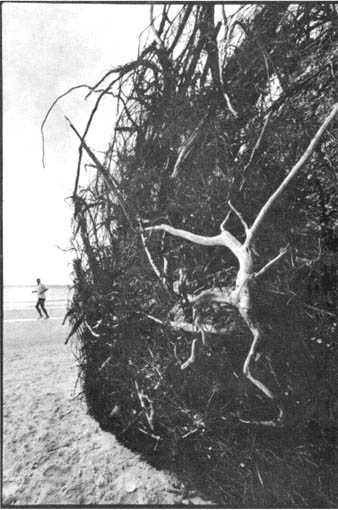
Beach, Marco Island, Florida, 1983
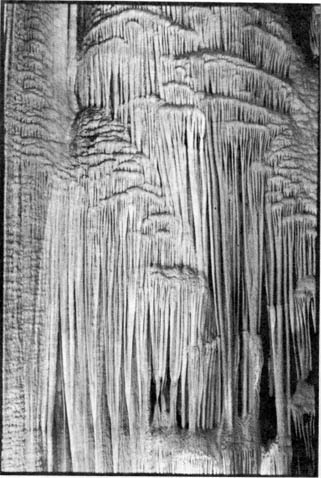
Meramec Caverns, Stanton, Missouri, 1969
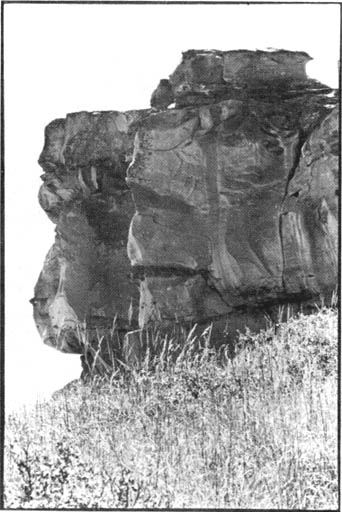
Pompey's Pillar, National Historic Landmark, near Billings, Montana, 1981
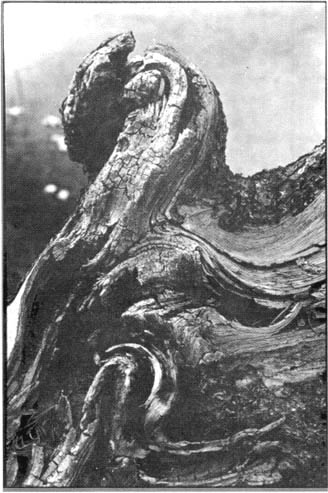
Twisted tree stump, Custer National Forest, Wyoming, 1987
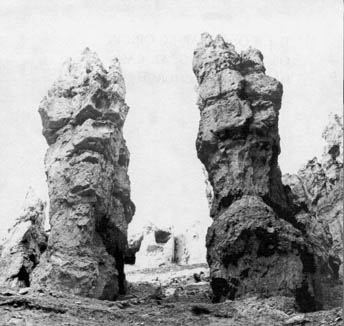
Bryce Canyon National Park, Utah, 1965
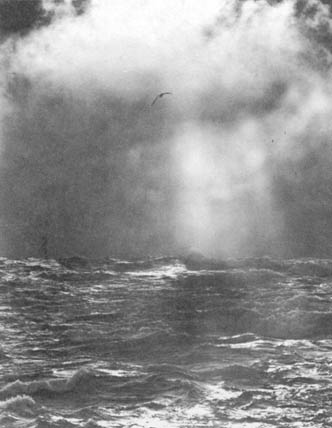
Niagara Falls, New York, 1968